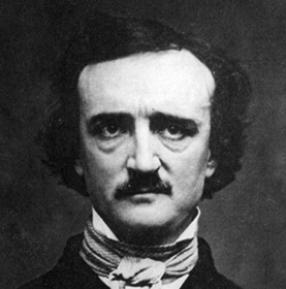|
Symphony
MONUMENTAL MAHLER 5TH IN SO CO PHIL'S SEASON ENDING CONCERT
by Terry McNeill
Sunday, April 14, 2024
Chamber
OAKMONT SEASON CLOSES WITH STRAUSS' PASSIONATE SONATA
by Terry McNeill
Thursday, April 11, 2024
Chamber
MORE GOLD THAN KORN AT ALEXANDER SQ CONCERT
by Terry McNeill
Sunday, April 7, 2024
Choral and Vocal
VIBRANT GOOD FRIDAY REQUIEM AT CHURCH OF THE ROSES
by Pamela Hicks Gailey
Friday, March 29, 2024
TWO OLD, TWO NEW AT THE SR SYMPHONY'S MARCH CONCERT IN WEILL
by Peter Lert
Saturday, March 23, 2024
Chamber
NOT A SEVENTH BUT A FIRST AT SPRING LAKE VILLAGE CONCERT
by Terry McNeill
Wednesday, March 20, 2024
THIRTY-THREE PLUS VARIATIONS AND AN OCEAN VIEW
by Terry McNeill
Saturday, March 16, 2024
Choral and Vocal
A ST. JOHN PASSION FOR THE AGES
by Abby Wasserman
Friday, March 8, 2024
Choral and Vocal
SPLENDID SCHUBERT SONGS IN SANET ALLEN RECITAL
by Terry McNeill
Saturday, March 2, 2024
Chamber
SHAW'S MICROFICTIONS HIGHLIGHTS MIRO QUARTET'S SEBASTOPOL CONCERT
by Peter Lert
Friday, March 1, 2024
|
 |
 Edgar Allan Poe |
HEAR THE TOLLING OF THE BELLS--IRON BELLS!
by Steve Osborn
Sunday, December 4, 2016
Thanks to the generosity of Don Green (as in Green Music Center), the Santa Rosa Symphony has for many years performed an annual choral program, usually during the holiday season. In keeping with this tradition, the orchestra and the SSU Symphonic Chorus featured Rachmaninoff’s choral symphony “The Bells” during their Dec. 3-5 concert set (I attended on Dec. 4). Rachmaninoff’s title suggests a festive work appropriate to the season, but the reality is that “The Bells” is a peculiarly Russian version of Edgar Allan Poe’s captivating but ultimately tragic poem, more suitable for mourning than merriment.
The music of “The Bells” is among Rachmaninoff’s best, mixing equal parts of passion and invention. The third movement, “Alarm Bells,” is particularly stirring in its mixture of fortissimo choral lines, unusual orchestration and melodic fervor. Both choir and orchestra proved up to the task in this performance, with lines like “In a tuneless, jangling wrangling as they shriek, and shriek, and shriek” ringing forth with clear diction and enormous power. Maestro Bruno Ferrandis conducted with vigor, and the orchestra sustained the drama throughout.
The other movements were less impressive, hampered by often inaudible soloists, imperfect balance and a strangely perverted translation and retranslation of Poe from English to Russian to English. Much is lost in transit, such as Poe’s insistent repetition of key words--bells, time, tinkle--and his rhythmic intensity. Captivating lines like “How they tinkle, tinkle, tinkle / In the icy air of night” are debased into “Rippling sounds of laughter falling / On the icy midnight air.”
These textual difficulties were somewhat moot during the performance because the words were often hard to hear and nearly impossible to read in the darkness. Perhaps the powers that be could raise the auditorium lights slightly during vocal performances or even consider using supertitles, as in opera houses.
Tenor soloist Christopher Bengochea sang with excellent diction, but his voice was somewhat dark, and his head was often buried in the score. Soprano Jenni Samuelson has a lovely voice, but her insistent vibrato sometimes overpowered the text; her performance was much better in Rachmaninoff’s wordless “Vocalise,” which ended the program. Baritone Philip Skinner was the most impressive soloist, enunciating his mournful lines with deep resonance. He was also the most engaged with the audience, rarely referring to his score.
“The Bells” was actually the second bell-related piece on the program, which opened with a spirited performance of contemporary composer August Read Thomas’s “Prayer Bells.” Like many other modern compositions, the work is built around a single sustained note, or drone, heard in different octaves. The melodic material, such as it is, begins and ends on the drone, with no forward progression. Attention thus focuses on orchestral color and quality of sound, which was impressive; but the lack of forward motion was frustrating.
The highlight of the concert was Elgar’s “Enigma Variations,” which earned a standing ovation before intermission from the packed house. The majestic ninth variation, “Nimrod,” is often played by itself, but it sounds even better when heard in the context of the 13 other variations on Elgar’s “Enigma” theme.
Unlike purely musical variations, Elgar’s are based on the characteristics of individual people, with only distant references to the original theme. This change in basis, as it were, gives Elgar considerable freedom to depict each person’s foibles in sound. There is considerable variety to the variations, and the orchestration is consistently inventive and delightful.
The symphony played with great confidence and gusto, easily switching from grim foreboding to fragile delicacy. The clarinet, viola and cello solos were outstanding, and Ferrandis’s conducting was both steady and fluid throughout. He would have done better to program the gloomy Rachmaninoff first and the shimmering Elgar last, so everyone could leave with a smile on their face instead of a furrowed brow.
|
